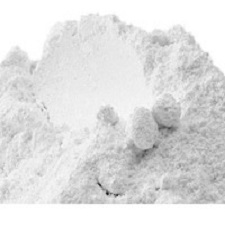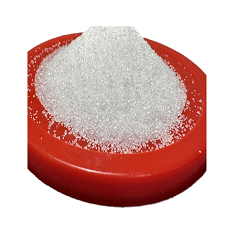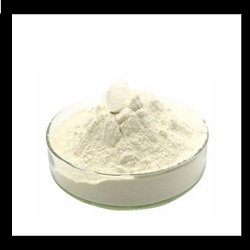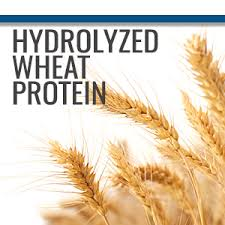Description
Titanium Dioxide
Titanium dioxide, also known as titanium(IV) oxide or titania, is the naturally occurring oxide of titanium, chemical formula TiO2. When used as a pigment, it is called titanium white, Pigment White 6 (PW6), or CI 77891. Generally it is sourced from ilmenite, rutile and anatase. It has a wide range of applications, from paint to sunscreen to food colouring.
Titanium dioxide is the most widely used white pigment because of its brightness and very high refractive index, in which it is surpassed only by a few other materials. Approximately 4.6 million tons of pigmentary TiO2 are used annually worldwide, and this number is expected to increase as utilization continues to rise. When deposited as a thin film, its refractive index and colour make it an excellent reflective optical coating for dielectric mirrors and some gemstones like “mystic fire topaz”. TiO2 is also an effective opacifier in powder form, where it is employed as a pigment to provide whiteness and opacity to products such as paints, coatings, plastics, papers, inks, foods, medicines (i.e. pills and tablets) as well as most toothpastes. In paint, it is often referred to offhandedly as “the perfect white”, “the whitest white”, or other similar terms. Opacity is improved by optimal sizing of the titanium dioxide particles. Some grades of titanium based pigments as used in sparkly paints, plastics, finishes and pearlescent cosmetics are man-made pigments whose particles have two or more layers of various oxides – often titanium dioxide, iron oxide or alumina – in order to have glittering, iridescent and or pearlescent effects similar to crushed mica or guanine-based products. In addition to these effects a limited colour change is possible in certain formulations depending on how and at which angle the finished product is illuminated and the thickness of the oxide layer in the pigment particle; one or more colours appear by reflection while the other tones appear due to interference of the transparent titanium dioxide layers. In some products, the layer of titanium dioxide is grown in conjunction with iron oxide by calcination of titanium salts (sulfates, chlorates) around 800 °C or other industrial deposition methods such as chemical vapour deposition on substrates such as mica platelets or even silicon dioxide crystal platelets of no more than 50 µm in diameter. The iridescent effect in these titanium oxide particles (which are only partly natural) is unlike the opaque effect obtained with usual ground titanium oxide pigment obtained by mining, in which case only a certain diameter of the particle is considered and the effect is due only to scattering.
In ceramic glazes titanium dioxide acts as an opacifier and seeds crystal formation.
Titanium dioxide has been shown statistically to increase skimmed milk’s whiteness, increasing skimmed milk’s sensory acceptance score.
Titanium dioxide is used to mark the white lines of some tennis courts.
In cosmetic and skin care products, titanium dioxide is used as a pigment, sunscreen and a thickener. It is also used as a tattoo pigment and in styptic pencils. Titanium dioxide is produced in varying particle sizes, oil and water dispersible, and in certain grades for the cosmetic industry.
Titanium dioxide is found in the majority of physical sunscreens because of its high refractive index, its strong UV light absorbing capabilities and its resistance to discolouration under ultraviolet light. This advantage enhances its stability and ability to protect the skin from ultraviolet light. Nano-scaled (particle size of 30–40 nm) titanium dioxide particles are primarily used in sun screen lotion because they scatter visible light less than titanium dioxide pigments while still providing UV protection.Sunscreens designed for infants or people with sensitive skin are often based on titanium dioxide and/or zinc oxide, as these mineral UV blockers are believed to cause less skin irritation than other UV absorbing chemicals.
The above information is for general research purposes only and is not a representation or warranty of any kind. This material is not intended to diagnose, treat, cure or prevent any disease. The user of this material is solely responsible for determining fitness for any particular use; requesting and reviewing the applicable Material Safety Data Sheet; and compliance with all applicable laws and regulations. Terms and conditions apply.





zora (verified owner) –
great product. but please mention if this is water or oil soluble. tx
Upvote if this was helpful (0) Downvote if this was not helpful (0) Watch Unwatch Flag for removal
Gavin (verified owner) –
Purchased this online for laser engraving tiles. Works well. Product was delivered in the time period advertised.
Upvote if this was helpful (0) Downvote if this was not helpful (0) Watch Unwatch Flag for removal